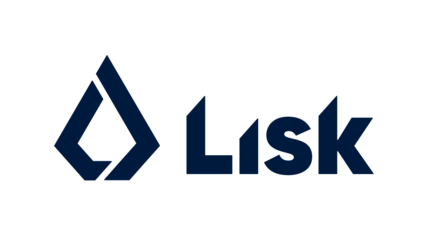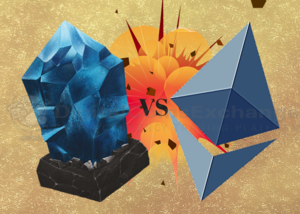Lisk


Lisk (LSK) is a blockchain application platform, established in early 2016 by Max Kordek and Oliver Beddows. Based on its own Blockchain network and token LSK, Lisk will enable developers to create, distribute and manage decentralized Blockchain applications by deploying their own sidechain linked to the Lisk network, including a custom token. Thanks to the flexibility of sidechains, developers can implement and customize their Blockchain applications entirely.
Contents
Lisk ICO
Lisk started as a fork of Crypti beginning with an ICO (Initial coin offering) to decide the initial distribution and raise development funds. The ICO raised 14,000 BTC and, at the time, was the second most successful cryptocurrency crowdfund (later that month, WAVES and The DAO would surpass it). On May 24, 2016, the mainnet for Lisk went live and it became available for trading on major exchanges. Quickly after trading started, Lisk briefly became the second most popular cryptocurrency traded against Bitcoin[1].
Since November 2017, Lisk has suprassed a market cap of $1,000,000,000, thus joining the rank of other blockchain unicorns.
Lisk Review
Decentralized Applications and Network
Lisk aims to be the first (successful) of its kind as a modular cryptocurrency. The idea is that every Blockchain App is on its own sidechain, separate from the main blockchain. This should help with scalability issues that many cryptocurrencies were facing. The sidechain is secured by a group of 101 masternodes elected by the app’s owner, and operate using the same Delegated-Proof-of-Stake (DPoS) consensus mechanism as the parent Lisk network. The Blockchain Apps are written using NodeJS/JavaScript on the backend and CSS3/HTML5/JavaScript for the frontend.
Lisk uses the DPoS (Delegated-Proof-of-Stake) algorithm originally created by BitShares. What differentiates it from regular PoS (Proof of Stake) is that only the top 101 delegates (determined by voting weight of voters) are actively forging and securing the network.
Lisk DPoS functions through a series of rounds. Rounds consist of 101 individual blocks. Each of the 101 active delegates is randomly assigned 1 block within the round to forge. A full cycle round takes 17 minutes. If a selected delegate is unable to forge their assigned block, activity from that block moves to the next block in the round.
Block Time
The Lisk network forges blocks in 10s intervals. In the event that a delegate fails to properly forge their assigned block, the transactions move to the next block in the round, causing the block to be extended by 10s. Each subsequent missed block results in a 10s delay for transaction processing and confirmations.
Mining or Forging
LSK coins are mined in a non-standard way for cryptocurrencies, called forging. It uses the PoS-proof-of-storage algorithm. Not all users of the platform will be able to engage in mining, but only individuals-101 people. Other users can only participate in the selection of these representatives. For the vote, they receive the reward is 1 coin. Delegates have the right to create their own pools and engage in mining, the reward will be distributed to all participants in the pool.
Lisk utilizes an inflationary forging rewards system which creates new LSK for every successful block. During year 1, the forging rewards are set at 5 LSK per block. Every 3,000,000 blocks (~1 year) forging rewards are reduced by 1 LSK, ending at 1 LSK per block after 5 years. The forging rewards will then stay at 1 LSK per block indefinitely. The Forging Rewards will be equally distributed through all active (top 101) delegates, same as any network fees.
Dapps
Decentralized application or Dapps are exactly what the name suggests. Applications of any sort running on many servers, providing unseen security, uptime and entirely new business models. A powerful component of the Lisk application platform is the ability to deploy, distribute and manage decentralized applications all in one place with seamless user experience. Decentralized applications include the whole package of front-end (what the user sees) and back-end (the logic behind it). A smart contract, on the other hand, consists only of the back-end, and often only a small part of it. This means that if you want to create a decentralized application on a smart contract system (i.e. not with Lisk), you have to combine several smart contracts and rely on 3rd party systems for the front-end. Possible use cases include applications that offer proof-of-ownership, improved online identity verification or asset management. In order to build your own application, it requires a developer to code it in JavaScript. By offering an SDK written in JavaScript, Lisk enables millions of developers around the world an accessible way to create their own decentralized applications by deploying their own Blockchain sidechain next to the Lisk network[2].
Lisk SDK
The Sidechain Development Kit (SDK) features a growing collection of modules for programming a blockchain application customized to your needs. The SDK consists of four powerful tools: Lisk Commander, Lisk Elements, Lisk Core and the Lisk Hub. Each tool has its own respective role.
Lisk wallets
It is possible to store Lisk coins on different wallets which are available on the Internet. Almost all of the wallets have the support of LSK tokens.
Lisk Hub
Lisk Hub is an all-in-one solution to manage your Lisk ID, access and send LSK tokens, as well as vote for delegates. It combines functionality from the former wallet and blockchain explorer. In the future, Lisk Hub will feature a DEX (decentralized exchange), sidechain registration and the ability to launch your own ICO.
Lisk Nano wallet
Lisk Nano is the old Lisk wallet that enables you to access your Lisk ID. It provides a minimal user interface and a wide range of functionalities for beginners and advanced users. With Lisk Nano, there is no need for blockchain synchronization as it connects directly to the Lisk network.
Lisk price
The price of Lisk LSK token is always changing, so BitcoinWiki suggests you to see the newest prices and Lisk news in the following widget by COIN360. Also there is a LSK/BTC pair price and Lisk market capitalization.
Tools
With a fully functioning mainnet, Lisk is currently developing a variety of tools to enable developers and app comissioners to easily create their own decentralized apps:
- Lisk Core enables delegate forging, provides blockchain synchronisation, and includes the complete API for developers. Lisk Core is for advanced technical users looking to build on top of the Lisk Platform, securing the network infrastructure or attain delegate forging access.
- Lisk Nano enables the user to send and receive transactions on the Lisk network and provides a simple user interface for more advanced features like delegate voting or registering a second passphrase. With Lisk Nano, there is no need for blockchain synchronisation as it connects to official Lisk nodes hosted by the Lisk Foundation. For the use of API calls and other advanced features please use Lisk Core.
- Lisk JS is a JavaScript library for Lisk – the cryptocurrency and blockchain application platform. It allows developers to create offline transactions and broadcast them onto the network. It also allows developers to interact with the core Lisk API, for retrieval of collections and single records of data located on the Lisk blockchain. Its main benefit is that it does not require a locally installed Lisk node, and instead utilizes the existing peers on the network. It can be used from the client as a browserify compiled module, or on the server as a standard Node.js module.
- Lisky is a back-end command tool which allows the user to communicate with a remote or local node and carry out Lisk-related functionality using an interactive or non-interactive command line tool[3].
Comparison with other cryptocurrencies
Lisk is commonly compared to other blockchain platforms Ethereum and Crypti, so it is important to note their differences[4].

Differences from Ethereum
- Lisk and Ethereum both try to provide a platform for a similar idea: Decentralized Applications.
- Lisk uses DPoS, while Ethereum currently uses PoW (they have stated they plan to switch to PoS eventually).
- Applications language: Lisk uses Javascript, while Ethereum currently uses Solidity.
- Applications location: Lisk uses sidechains, while Ethereum currently stores it on the main chain.
- Error handling: In Lisk, if your application has an issue it will be contained to only your chain, but Ethereum requires a hard fork to fix.
- In Ethereum, applications are run in a virtual machine on the main chain so any error should just result in the waste of transaction fees, but be contained to the VM (as long as there is no bug in the VM).
- Applications VM: Ethereum applications are run in the Ethereum Virtual Machine (EVM). Lisk does not have a VM, but it is in development.
Differences from Crypti
- Lisk commonly compared to Crypti, because it is a fork of it. However, they have various differences
- The database has been changed from SQLite to PostgreSQL.
- Completely open source and the whole development procedure is happening in public on GitHub.
- BIP39 enforced for all passphrases
- Development is continuing and active, while Crypti seems to have stopped.
External links
- Lisk Official website
- Lisk GitHub
- Lisk Reddit
- Lisk Blog – Co-Founder Max Kordek’s September Interview with The Blockchainers
- Lisk BitcoinTalk Forum
- Lisk Twitter
- Lisk price and market state on Coin360